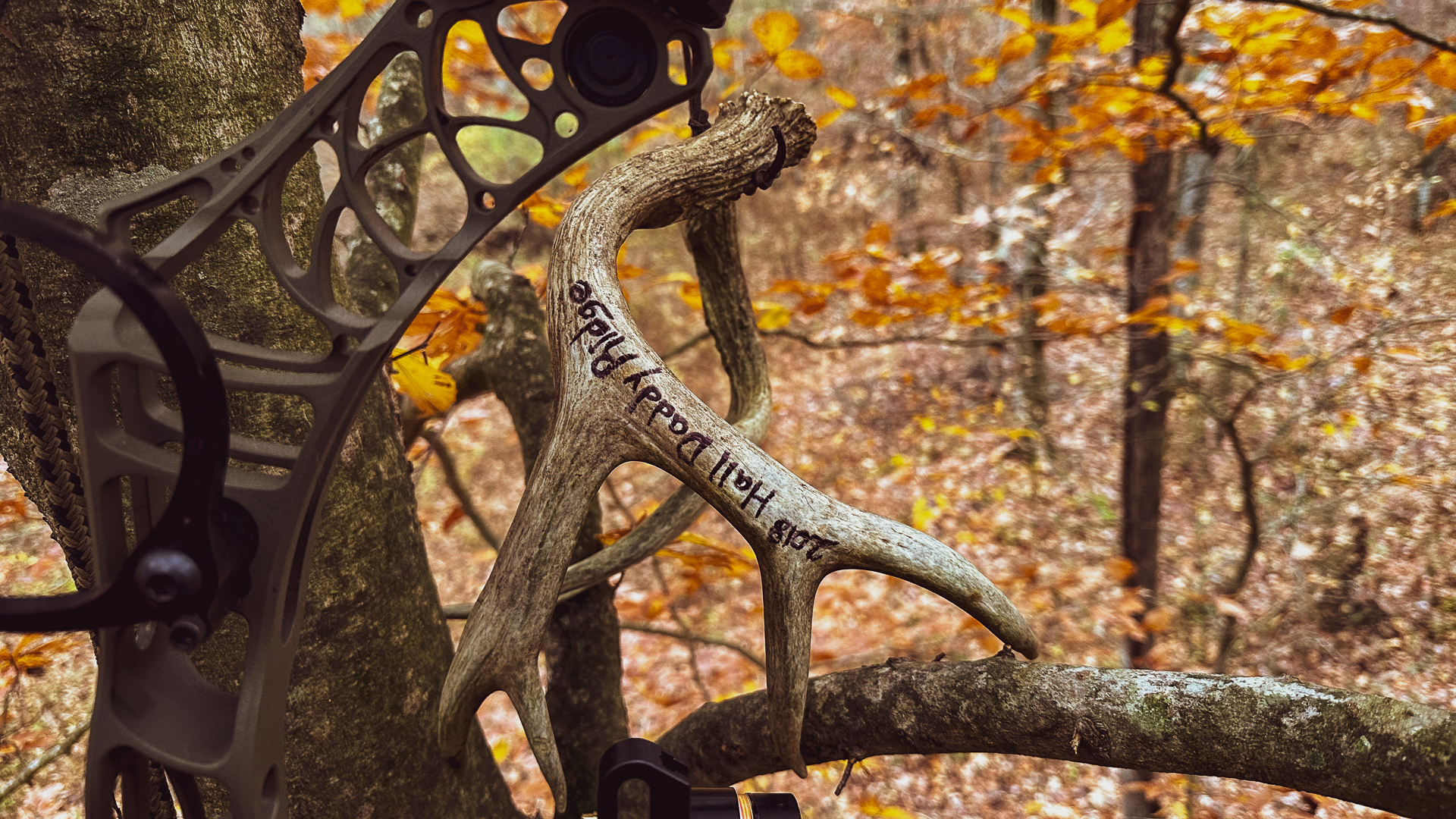Heath Wood
As November winds down, the chaos of the rut gives way to a quieter, more challenging hunting phase. Because of an unseasonably warmer fall, it seems that this year’s hunting season is flying by. As a dedicated hunter, I prepare mentally and physically all summer for when it is time to hunt. The early season tactics of hunting food sources and prefiguring buck travel patterns seemed to come and go like a flash of lighting. The pre-rut scrapes and rubs and watching bucks battle each other for dominance also went by quickly. Now, bucks are chasing, the rut is in full swing, and we all know the rut is a short period and will be over quickly as well. With the time clock clicking fast, the rut will soon be over, and deer will transition into the next phase, the post-rut. Hunters often dread this time, saying that it is one of the most challenging times of the year to harvest a mature buck. Or, at least, we think it is. The post-rut can be an excellent time to find a mature buck, still on his feet and ready for action. Don’t give up yet.
In late November, the post-rut phase begins to take place as bucks become worn from weeks of chasing does, their energy reserves have been depleted, and their behavior is now shifting. The post-rut period requires hunters to adjust tactics to match the changing patterns of deer activity. Like hunters, after we have hunted hard for a month or two, we sometimes must rest up, and then we are ready for round two. The same goes for mature bucks; they may bed up for a few days to regain some energy, and then it is time to go again and find the does that have not been bred.
Understanding Post-Rut Behavior

Photo courtesy of Jeff Lindsey
During the post-rut, bucks prioritize food and recovery. The frantic movements of the rut give way to more calculated and survival-driven behaviors. Does and younger deer also focus on feeding as temperatures drop and the need for fat reserves grows. However, the post-rut isn’t entirely devoid of rut-like behavior—secondary breeding cycles can occur, especially if unbred does or late-cycling fawns are in the area. I have witnessed grunting, scraping, chasing does, and many other peak rut behaviors take place in the last week of November. Hunters need to take advantage of the second rut and other post-rut activities, such as when resting and refueling their energy, to end the season with success.
Key Strategies for Post-Rut Success
Focus on Food Sources
Late November hunting revolves around locating food. Bucks are more likely to appear near reliable food sources like standing corn, cut soybean fields, acorns, and food plots in daylight. Identify travel routes between bedding areas and food sources and set up along these paths.
Late-season food plots with brassicas, turnips, or winter wheat can attract recovering deer. These deer are trying to quickly replenish the fat and energy that have melted away during the peak of the rut.
Find Thermal Cover
Deer seek warmth and safety during this time, not to mention they bed for more extended periods to replenish their energy. South-facing slopes, cedar thickets, and other thermal cover areas can serve as prime bedding zones. If a doe did not get bred during the peak rut, it takes her twenty-eight days to enter estrus a second time. This brief window between the end of the rut and when does come into heat a second time is a prime time to hunt near bedding areas where bucks are resting. Hunting near these areas allows you to catch bucks transitioning from bedding to feeding zones, which is primarily what a buck does during that time.
Use Low-Pressure Tactics
By late November, deer are wary and sensitive to human pressure after weeks of hunting activity. Prioritize stealth and avoid overhunting any single location. Use access routes that minimize scent trails and keep movement to a minimum. Often, I reserve a few areas to hunt for the post-rut. Not only can I adjust my tactics to meet a buck’s travel patterns after the rut, but it also gets me in a new location where deer are unfamiliar with my hunting.
Take Advantage of Secondary Rut
After a buck is rested, the post-rut occasionally sees a resurgence of buck activity as they search for does that didn’t breed during the primary rut. Monitor your trail cameras for signs of renewed activity and use estrus-based attractants sparingly to mimic the presence of a late-cycling doe. During this time, I also like to bring back out my grunt call to mimic the sounds of a buck chasing a doe, making other bucks jealous or anxious to get to a doe faster. It is important to remember that there will only be a few does that come into a second cycle, much fewer than during the peak rut. For that reason, faster response times are more likely when a buck smells your estrus scent or hears the grunt from your call.
Capitalize on Weather Patterns
Late November often brings harsh weather. Use cold fronts, overcast days, or light snow to your advantage. Deer are more likely to move during these times, especially around high-value food sources. You will likely have to dress warmer and sit longer, yet when you can sit longer late in the season, there is a better chance of seeing a lot of deer in one concentrated food source area. When you have a lot of does, you are bound to have mature bucks nearby.
Don’t let the post-rut pass by without taking advantage of its full potential. The post-rut presents unique challenges but can be incredibly rewarding with the right mindset and strategies. Adapt your approach to focus on food, cover, and the subtle remnants of the rut. With patience and preparation, late November can yield mature bucks ready to replenish themselves after the rut’s rigors.





























